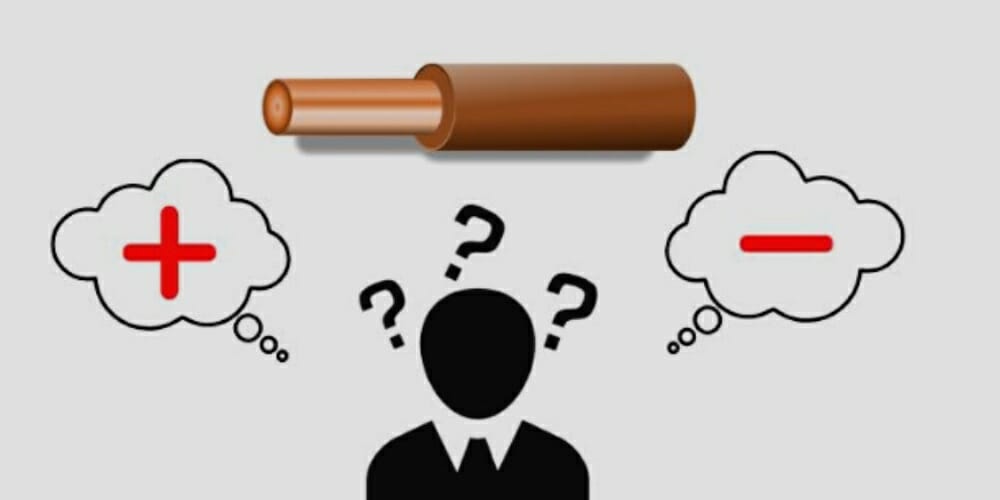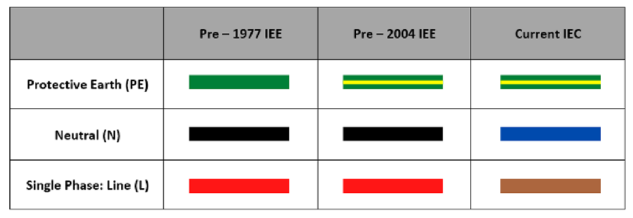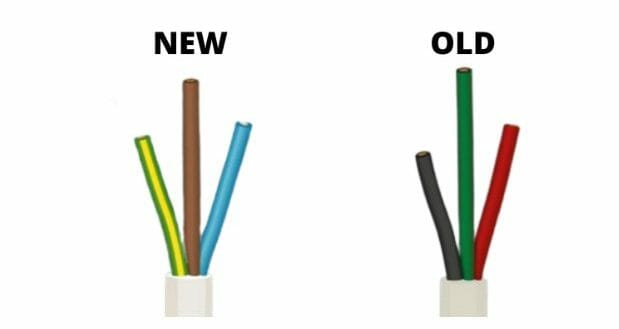Is Brown Wire Positive or Negative?

Branch circuit wiring for AC and DC power distribution is color-coded to make it easier to distinguish between different wires. In 2006, the UK’s wiring color designations were harmonized with the rest of continental Europe to comply with international standard IEC 60446. As a result of the modifications made, the blue wire is now the neutral wire, the green and yellow stripe is now the earth, and the brown wire, which is the subject of this article, is now the live wire. Now, you might ask, is brown wire positive or negative?
In general, the brown wire, called live wire, is a positive wire denoted as “L+” in the International Electrotechnical Commission (IEC) DC power circuit wiring color codes.
Keep reading to better understand the uses and function of the brown (live) wire.
Brown Wire: Positive Negative?
In the International Electrotechnical Commission (IEC) DC power circuit wiring color codes, the brown wire also referred to as the live wire, is a positive wire marked as “L+”. The brown wire’s job is to transport electricity to the appliance. If the brown wire is live and not linked to the earth or neutral cables, there is a chance that you can be electrocuted. Therefore, before working on your wiring, ensure no power source is attached to the live wire.
Understanding Electrical Wiring Color Codes
Due to revisions in electrical wiring color codes, both fixed mains-powered and electrical cable and any flexible cabling now have wires of the same color. In the UK, there are differences between their old and new wire colors.

Blue neutral wiring has replaced the previous black neutral wiring. Also, the old red live wiring is now brown. The cables should be appropriately identified with the appropriate wire color codes if there is any mixture of the old and new wiring colors to prevent the improper application of the phase and neutral. The blue (neutral) wire transfers electricity away from the appliance, while the brown (live) wire delivers electricity to the appliance. This wire combination is known as a circuit.
The green-yellow (earth) wire serves an essential safety purpose. Any property’s electrical transmission will always follow the route to the earth that presents the least amount of resistance. Now, because electricity may pass through the human body on its earthing path if live or neutral cables are damaged, this could raise the danger of electrocution. In this case, the green-yellow earth cable effectively earths the electrical appliance, preventing that from happening.

Caution: Fixed wires and cables of different colors, as well as installations with circuits, should be marked with warning signs. This warning should be marked on the fuse board, circuit breaker, distribution board, or consumer unit.
IEC DC Power Circuit Wiring Color Codes
Color coding is used in DC power facilities that adhere to the AC standards, such as solar power and computer data centers.
The following is a list of DC power cable colors that adhere to IEC standards. (1)
| Function | Label | Color |
| Protective Earth | PE | Green-Yellow |
| 2-Wire Unearthed DC Power System | ||
| Positive Wire | L+ | Brown |
| Negative Wire | L- | Gray |
| 2-Wire Earthed DC Power System | ||
| Positive negative earthed Circuit | L+ | Brown |
| Negative (negative earthed) Circuit | M | Blue |
| Positive (positive earthed) Circuit | M | Blue |
| Negative (positive earthed) Circuit | L- | Gray |
| 3-Wire Earthed DC Power System | ||
| Positive Wire | L+ | Brown |
| Mid-Wire | M | Blue |
| Negative Wire | L- | Gray |
Sample Application
If you recently bought a lighting fixture and are attempting to install it in the USA, for example, LED parking lot light or warehouse lighting. The light employs international wiring standards and, in that approach, the matching is relatively simple:
- Brown wire of your fixture to your building’s black wire.
- Blue wire of your fixture to your building’s white wire.
- Green with a yellow stripe of your fixture to your building’s green wire.

You will likely connect several hot wires to your fixture’s brown and blue cables if you operate at 220 volts or above. However, greater voltages should only be used in extreme circumstances. Most contemporary LED lights only need 110v, which is quite adequate. The only valid justification for doing so is for long lines, such as running wiring 200 feet or more for sport court lighting, or when a facility is already wired for 480 volts. (2)
Safety Caution: When wiring, never forget to turn off the electricity at the breaker. Then, always use the proper wire nuts or other connectors to secure your connections.
Take a look at some of our related articles below.
- Is white wire positive or negative
- How to run electrical wire in unfinished basement
- What gauge wire for light fixture
References
(1) IEC – https://ulstandards.ul.com/ul-standards-iec-based/
(2) LED – https://www.britannica.com/technology/LED
